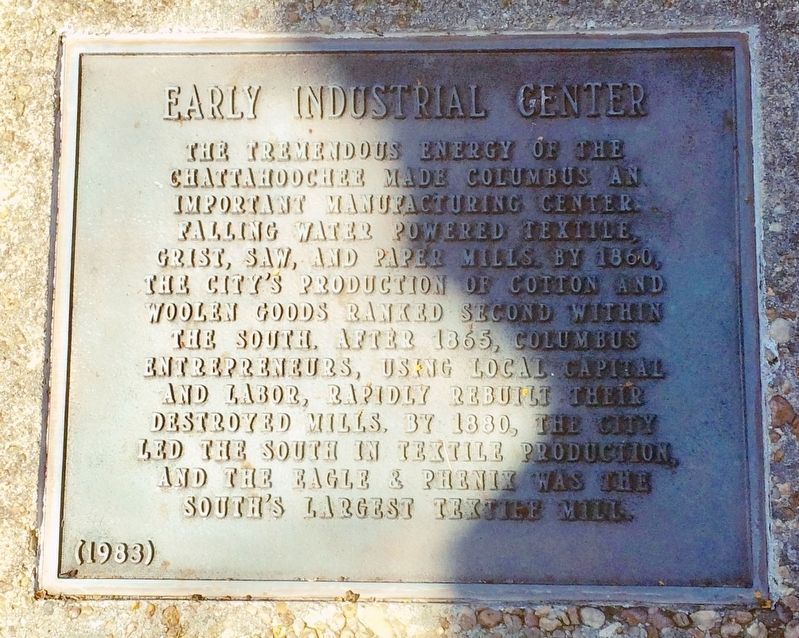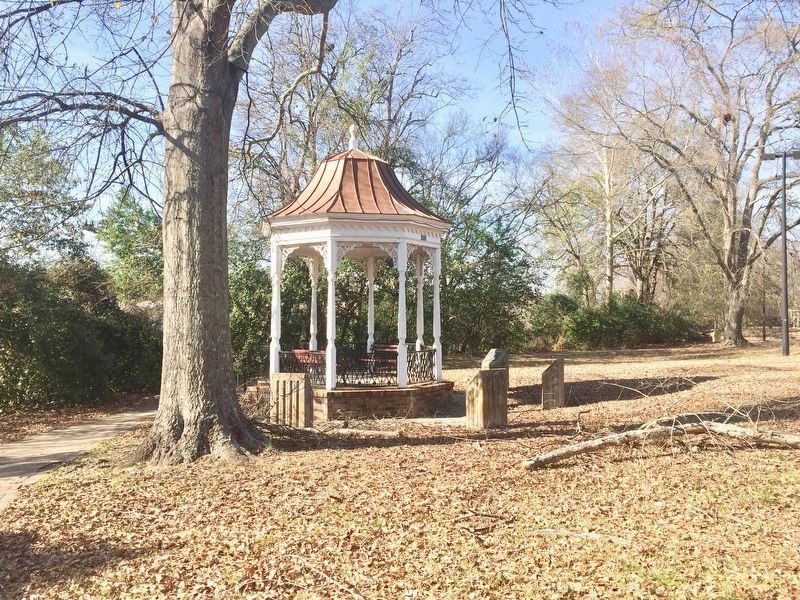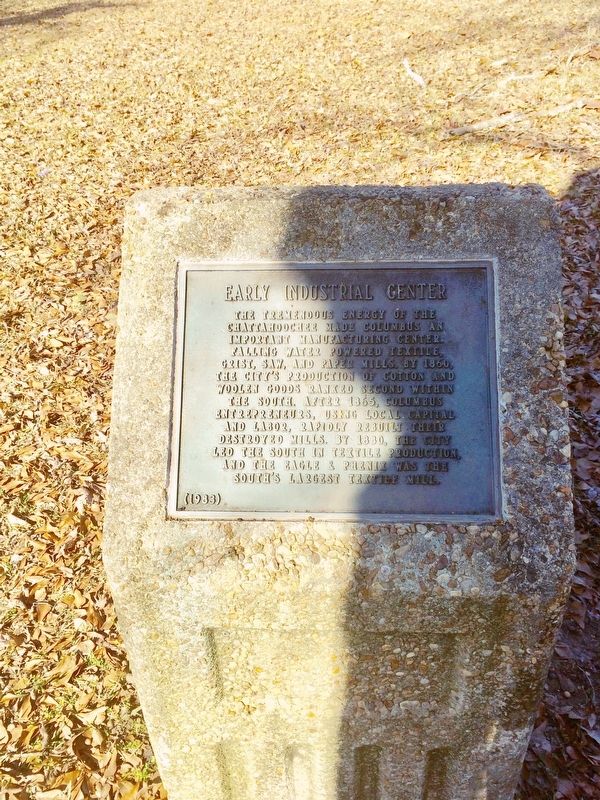Columbus in Muscogee County, Georgia — The American South (South Atlantic)
Early Industrial Center
Chattahoochee made Columbus an
important manufacturing center.
Falling water powered textile,
grist, saw, and paper mills. By 1860,
the city's production of cotton and
woolen goods ranked second within
the south. After 1865, Columbus
entrepreneurs, using local capital
and labor, rapidly rebuilt their
destroyed mills. By 1880, the city
led the south in textile production,
and the Eagle & Phenix was the
south's largest textile mill.
Erected 1983.
Topics. This historical marker is listed in these topic lists: Agriculture • Industry & Commerce • Waterways & Vessels. A significant historical year for this entry is 1860.
Location. 32° 27.448′ N, 84° 59.718′ W. Marker is in Columbus, Georgia, in Muscogee County. Marker can be reached from Front Avenue north of West 6th Street. Located between the railroad tracks and the Chattahoochee Riverwalk (below). Touch for map. Marker is at or near this postal address: Front Avenue, Columbus GA 31901, United States of America. Touch for directions.
Other nearby markers. At least 8 other markers are within walking distance of this marker. Fort Benning (here, next to this marker); Mass - Produced Ice Machines (here, next to this marker); Soft Drinks (here, next to this marker); Industrial District (a few steps from this marker); Carson McCullers (1917 - 1967) (within shouting distance of this marker); Nunnally Johnson (1897-1977) (within shouting distance of this marker); Augusta Jane Evans (1835-1909) (within shouting distance of this marker); Prize-Winning Newspapers (within shouting distance of this marker). Touch for a list and map of all markers in Columbus.
Regarding Early Industrial Center. More than any other single factor, the Chattahoochee River has been the catalyst for the economic development of Columbus and the surrounding area. The city's river-powered industrial output was such that by the time of the Civil War it ranked as one of the south's
leading industrial centers and was second-largest southern textile production center. Regional water-powered industry played a key role in supporting the Confederate war effort, and though many facilities were destroyed during the conflict, by the late 1800s Columbus was once again one of the leading centers in national textile production. In the postwar years the West Point/Lanett area north of Columbus capitalized on the river's power as well, and by the 1930's that area's concentration of mills ranked it as the nation's sixth-largest textile-manufacturing complex.
The first mill to utilize its power was constructed in the same year the city was founded, and in less than three decades Columbus was home to a variety of mills producing items including ground wheat and corn, sawed lumber and textiles.
Much of the river-powered industrial development in Columbus occurred along the river in a series of "water lots." These lots, positioned to take advantage of the waterpower diverted their way by a dam, was envisioned by 1840s city officials as an enticement for industrial entrepreneurs. For well over 100 years, Columbus textile industries continued to operate along this stretch.
The river's importance as a power source goes beyond mills and factories. Hydroelectric power, first used in Columbus in 1882, quickly became profitable as mill powerhouses, then dams, began to generate electricity. By the 1920s dams on the Chattahoochee in the Columbus area were selling electricity to thousands of citizens far from the river's banks, and the area came to be as recognized for its role in power generation as its other long-standing manufacturing capabilities. Columbus was so well-known for its hydroelectricity industry that it was known as the "electric city" in the early 1900s. One turbine at the Eagle and Phenix Mills powerhouse, installed in 1898, still produces electricity today. Source: The Columbus Museum
Also see . . . A Brief History of Eagle & Phenix 1851 through 2005. (Submitted on February 21, 2017, by Mark Hilton of Montgomery, Alabama.)
Credits. This page was last revised on February 21, 2017. It was originally submitted on February 21, 2017, by Mark Hilton of Montgomery, Alabama. This page has been viewed 259 times since then and 13 times this year. Photos: 1, 2, 3. submitted on February 21, 2017, by Mark Hilton of Montgomery, Alabama.


